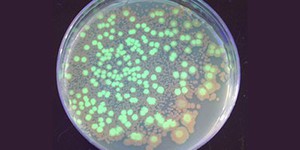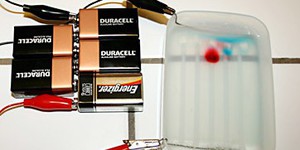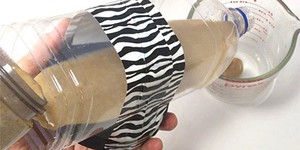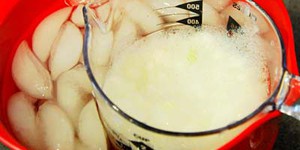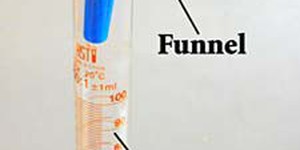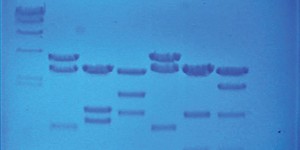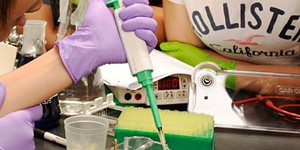Biotechnology Science Projects (30 results)
Yogurt, biofuel, biodegradable plastics, and antibiotics are all examples of products based on biotechnology research and manufacturing techniques. What else will we be able to create as we use biotechnology in new ways?
|
Select a resource
Sort by
|
All living things have DNA inside their cells. How do scientists extract the DNA from cells in order to study it? In this science experiment you can make your own DNA extraction kit from household chemicals and use it to extract DNA from strawberries.
Read more
Featured
Have you heard that garlic powder is supposed to inhibit the growth of bacteria? Which do you think would make a better disinfectant: a solution of garlic powder or a solution of bleach? This project shows you a straightforward way to compare the effectiveness of different disinfectants (or other antimicrobial agents), by measuring zones of inhibition on a culture plate.
Read more
Have you ever heard or read about GMO?
GMO stands for
genetically modified
organisms.
Scientists can deliberately modify the DNA of organisms, such as bacteria or plants, to change their properties for a specific purpose. For example, crops can be modified to become more drought- or pest-resistant. Genetic engineering is a very powerful tool in biotechnology that has already found many different applications in agriculture, medicine, and industry. In this project, you will engineer a…
Read more
New
Artificial intelligence (AI) programs can now generate photorealistic pictures of people who do not exist in the real world. How can you tell if a picture is of a real person or a fake, AI-generated person? What features of the picture do people use to decide whether the face is real or AI-generated? In this project, you will explore these questions as you ask volunteers to look at both real and AI-generated pictures of human faces.
Read more
When biologists want to separate different pieces of DNA, RNA, or proteins they use a technique called gel electrophoresis. In this science project you'll build a gel electrophoresis chamber and use it to discover how many components are in different colors of food coloring dye.
Read more
Sometimes science can be really messy or use pretty disgusting ingredients. That is what it takes to understand how the world works, even if the experiment isn't pretty. Do you like chemical reactions that stink and ooze foamy bubbles? Do you think it sounds fun to make a super gross liver smoothie? Then this is the experiment for you!
Read more
How much iron is in your cereal? In this experiment, you will devise a way of testing foods for supplemental iron additives. Then you will use your design to test different breakfast cereals to see how much iron they contain. Which brand of cereal will have the most iron in it?
Read more
New
Remembering to take medicine at the right time can be hard, especially if you need to take multiple medications at different times of day. It might not be a big deal if you forget to take your daily multivitamin, but for some people, forgetting to take medication at the right time can be dangerous. What if you had a device that could not only set off an alarm at the right time, but also automatically dispense the right pills for you? In this project, you will build an automatic medicine…
Read more
In this project, you'll learn how to isolate DNA from onion cells, separating it from other cellular components in a manner that still preserves its structure and sequence. In the end, you'll have enough DNA to see with the unaided eye, and you'll be able to spool it to demonstrate its strand-like structure.
Read more
Do you know why enzymes are oftentimes called the workhorses of biochemistry? It's because they can speed up a wide variety of chemical reactions, and chemists and biologists use enzymes to do all kinds of jobs. In this project, pectinase, an enzyme frequently used in the food industry, will be used to extract juice from apples.
Read more
Are you interested in the technical and ethical aspects of genetic screening, forensic science, and DNA fingerprinting? Scientists use different forms of a gene, called alleles, to differentiate between two fingerprints. One such sequence used in human DNA fingerprinting is the Alu repeat (a 300 base pair repetitive sequence of DNA) on chromosome 16. During evolutionary time, up to 1 million copies of the Alu repeat have become randomly inserted throughout the human genome. Within a specific…
Read more
Are biofuels the wave of the future? People often talk about these plant-derived fuels as a way to someday cut down on our dependency on non-renewable carbon-based fuels, like gasoline. Ethanol (a type of alcohol) is a common biofuel used today. In the United States, ethanol is a common biofuel additive to normal gasoline. In fact, some states mandate that when you fill up your gas tank, 10 percent of the total fuel volume be made of ethanol. Brazil, the world's second largest user of…
Read more
Genetically modified organisms (GMOs) are organisms whose DNA have been manipulated to give them new traits. In genetically modified (GM) food crops traits like resistance to drought or pesticide might be added, or the crop may have been made more nutritious, or the taste may be altered to give you something like the impossible burger. Are there GMOs in your favorite foods? Many countries have implemented or are in the process of implementing GMO labeling on foods, but with a little bit of…
Read more
|
Explore Our Science Videos
Make an Ion Wind Rotor
How to Make an Archimedes Screw - STEM Activity
Model a Lung Infection





